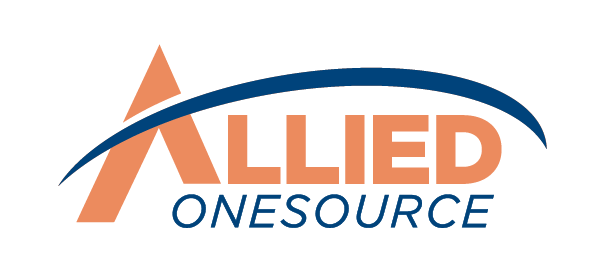2026 Hiring Trends: What's Ahead for Industrial & Admin Jobs
Your hiring strategy for 2026 starts with the decisions you make today. The U.S. economy is projected to add 5.2 million jobs from 2024 to 2034, but this growth comes with new challenges around workforce planning, skills gaps, and evolving job functions.¹ Organizations that understand these shifts early will have significant advantages in talent acquisition and retention.
The future of work in light industrial and administrative roles will look different than today. Automation is reshaping job requirements, remote capabilities are becoming essential even for traditionally on-site positions, and success will depend on your ability to identify and develop talent ahead of the competition.
Six Workforce Trends Reshaping Light Industrial and Admin Hiring in 2026
Here are six key trends that will define your hiring success in 2026.
AI Transforms Both Recruitment and Job Functions
Artificial intelligence is becoming standard in recruitment processes, from resume screening to workforce planning that predicts hiring needs before they become urgent. Job requirements are shifting toward AI collaboration rather than replacement, with admin support jobs requiring workers who can interpret AI-generated reports and light industrial roles needing AI troubleshooting skills.
How to adapt: Train your hiring teams on AI recruitment tools and look for candidates with tech adaptability. Update job descriptions to include AI collaboration skills as requirements.
Administrative Roles Evolve Toward Higher-Value Work
Traditional administrative tasks are becoming automated, creating opportunities for specialized admin support jobs in healthcare administration, compliance coordination, and data analysis. The future workforce planning needs admin professionals who can manage complex decision-making and coordinate between digital systems and human teams.
How to adapt: Upskill existing admin staff in data analysis and specialized software. Rewrite job descriptions to emphasize analytical skills rather than basic clerical tasks.
Manufacturing Splits into Traditional vs. High-Tech
Manufacturing employment shows a clear divide. A study conducted by Deloitte and The Manufacturing Institute showed that 1.9 million manufacturing jobs could go unfilled over the next 10 years if talent challenges are not addressed.² Electric Vehicle battery production and renewable energy manufacturing are expanding while traditional manufacturing declines.
How to adapt: Target growth sectors like renewable energy for recruitment efforts. Partner with technical schools and focus on companies investing in advanced technology.
Flexible Staffing Becomes the New Standard
Project-based work arrangements are increasing across both light industrial and admin roles as companies need agility during demand fluctuations. On-demand talent pools allow organizations to scale quickly without long-term commitments, while workers gain flexibility to choose assignments that match their skills and schedules.
How to adapt: Develop relationships with specialized staffing partners who understand your industry's specific needs. Create streamlined onboarding processes that can get temporary workers productive within days, not weeks.
Skills-Based Hiring Overtakes Degree Requirements
Organizations are focusing on demonstrable capabilities rather than credentials, especially for light industrial positions where hands-on experience matters more than formal education. Micro-credentialing and portfolio-based assessments are replacing traditional degree requirements as employers realize skills can be developed through various paths.
How to adapt: Redesign job postings to emphasize specific skills and competencies rather than education requirements. Implement practical assessments that let candidates demonstrate their abilities during the interview process.
Remote Capabilities Required Even for "On-Site" Roles
Hybrid administrative support is becoming standard as companies realize many admin tasks can be handled remotely, even when supporting on-site operations. Digital-first processes are expanding into manufacturing environments, requiring workers who can collaborate across physical and virtual workspaces.
How to adapt: Invest in collaboration technology that connects remote and on-site workers seamlessly. Ensure all roles have some remote capability, even if it's just for training, communication, or administrative tasks.
Your 2026 Workforce Readiness Checklist
These trends won't wait for your organization to catch up. Use this checklist to prioritize your workforce planning efforts and ensure you're prepared for the changes ahead.
Start Immediately:
- Audit current AI tools and identify gaps in your recruitment process
- Begin upskilling admin staff in data analysis and specialized software
- Evaluate which manufacturing sectors align with your growth strategy
- Establish relationships with specialized staffing partners
- Remove degree requirements from job postings where skills matter more
- Assess your technology infrastructure for remote collaboration capabilities
Early 2026 Planning:
- Implement practical skills assessments in your hiring process
- Develop rapid onboarding procedures for flexible workers
- Create cross-training programs for existing employees
- Update all job descriptions to reflect AI collaboration requirements
Mid-2026 Execution:
- Launch hybrid work arrangements for administrative roles
- Expand partnerships with technical schools in growth sectors
- Measure and adjust your skills-based hiring outcomes
- Scale successful flexible staffing arrangements across departments
Transform Your Workforce Strategy for 2026
The workforce landscape is changing faster than ever, and the organizations that adapt their hiring strategies now will have significant advantages in talent acquisition and retention. At Allied OneSource, we help companies navigate these evolving trends with strategic workforce planning and flexible staffing solutions tailored to light industrial and administrative roles.
Our deep industry expertise and comprehensive talent networks position us to support your hiring needs as these six trends reshape the market. Whether you need to quickly scale your team with skilled temporary workers or develop long-term strategies for skills-based hiring, we understand the challenges you're facing.
Ready to build a competitive advantage in the 2026 talent market? Contact us today to discuss how we can help you prepare for tomorrow's workforce challenges while meeting today's staffing needs.
References
1. “Employment Projections: 2024–2034 Summary.” Bureau of Labor Statistics, U.S. Department of Labor, 28 Aug. 2025, https://www.bls.gov/news.release/ecopro.nr0.htm.
2. Coykendall, John, Kate Hardin, John Morehouse, and Steve Shepley. “2025 Manufacturing Industry Outlook.” Deloitte Research Center for Energy & Industrials, 20 Nov. 2024, https://www.deloitte.com/us/en/insights/industry/manufacturing-industrial-products/manufacturing-industry-outlook.html.











